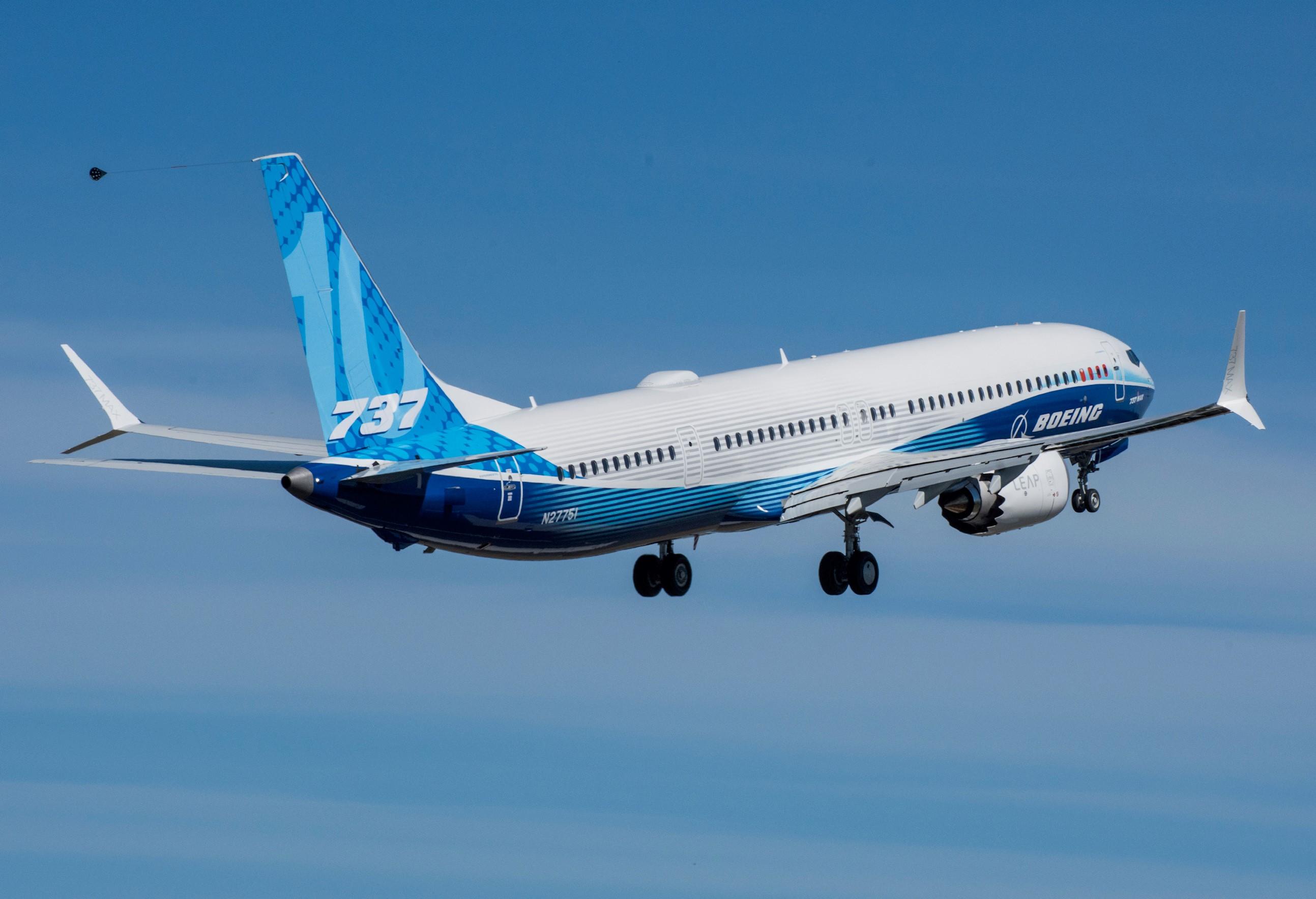Extension For 737-7, 737-10 Approvals Could Come With Upgrade Mandates

WASHINGTON—A bill under consideration to grant Boeing more time to earn approval of its last two 737 MAX variants without flight deck upgrades would also require U.S. operators to retrofit their fleets with two safety enhancements that European regulators required as part of their return-to-service parameters.
The legislation, drafted by Sen. Maria Cantwell (D-Washington), would open the door for Boeing to wrap up lengthy certification efforts on the 737-7 and 737-10 without requiring the models to comply with specific flight crew alerting rules. Without the relief, a December 2022 deadline prohibiting the FAA from approving new transport-category aircraft without flight crew alerting kicks in, and Boeing would be forced to modify the aircraft’s flight decks or cancel the programs.
Cantwell’s proposal, first reported by The Seattle Times, pulls in two upgrades Boeing agreed to develop to satisfy European Union Aviation Safety Agency (EASA) concerns raised during the model’s 21-month grounding. One is a third angle-of-attack (AOA) data source, and the other is a switch that would allow pilots to silence nuisance stick-shaker stall warnings.
EASA’s January 2021 return-to-service report said both would be introduced on the 737-10 and “retrofitted on in-service MAX airplanes ... in order to ensure the long-term safety of the 737 MAX.”
Boeing began testing the new AOA data source in March as part of 737-10 certification. The nuisance-alert switches were revealed publicly during the aircraft’s appearance at the Farnborough Airshow in July.
Adding a third AOA source and helping pilots suppress nuisance stick-shaker alerts were two of the top priorities regulators identified during their reviews of the 737 MAX’s design following fatal accidents in 2018 and 2019 that led to the fleet’s grounding. While poorly designed software behind an addition to the 737 MAX’s flight control system and Boeing’s decision to keep pilots out of the loop about the changes were the main contributors to each accident, faulty AOA data and related nuisance alerts played roles in confusing both flight crews.
Several regulators, including EASA and Transport Canada, green-lighted a procedure that lets pilots pull a circuit breaker to silence a stick-shaker alert if necessary. The FAA does not support the procedure, citing risks of pilots taking their attention away from flying the aircraft or monitoring its state.
The pending deadline stems from a 2020 law that ordered changes to FAA certification protocols. The new flight crew alerting requirements were given a two-year window to ensure Boeing wrapped up certification of the 737 MAX family, which was granted exemptions from some current requirements, at Boeing’s request, to maintain commonality between the families. But other changes in the law and FAA’s more exacting approach to certification projects following the 737 MAX crisis have prolonged both certification programs and put the deadline into play.
Industry remains divided on the best way forward. Boeing, the Air Line Pilots Association, and the Southwest Airlines Pilots Association believe a common flight deck is the safer option, arguing that flight deck variations within a subfleet introduce more risk than adding an Engine Indicating and Crew Alerting System (EICAS) to two variants would eliminate.
The Allied Pilots Association (APA), which represents American Airlines, is among the dissenters, believing that holding the line on the deadline—and forcing Boeing to add an EICAS to get the new variants approved—is appropriate.
Word that an extended deadline could include upgrades for 737-8s—the only version of the MAX family that American has in service or on order—as well as 737-9s has not changed APA’s stance. The union’s position: while the current 737 MAX design is safe, adding EICAS would make the new variants safer, and it has seen no evidence that more advanced alerting systems on some 737 MAXs would create issues for pilots switching between different family variants.
“We have yet to see a system safety assessment that suggests placing EICAS on the MAX 7 or MAX 10 would be unsafe or a distraction to the pilots,” said APA spokesman Dennis Tajer. “To the contrary, there are loads of studies supportive of EICAS and its assistance to the pilots as a display system. It’s like having an engineer and a pilot on board, pointing out where the problems are and helping you clear through the clutter and then providing a checklist to resolve it. It’s a modern-day alerting system and it’s safer with that system on the airplane.”
Tajer, a 737 pilot for American, contends that the difference between EICAS-equipped 737 MAXs and the current versions would be similar to that between older 737s and the 737 MAX.
“We fly the EICAS system on other airplanes,” Tajer said. “It is no more distractive than the MAX display system is compared to the NG system.”
Tajer said he recently flew his first 737-8 trips in a few months and had to refresh his memory on the flight deck differences between the newer Boeing narrowbodies and the 737-800s that make up nearly 90% of the airline’s active 737 fleet of 318 aircraft.
“We got the job done,” he said. “It was safe. We’re trained to do it.”




Comments